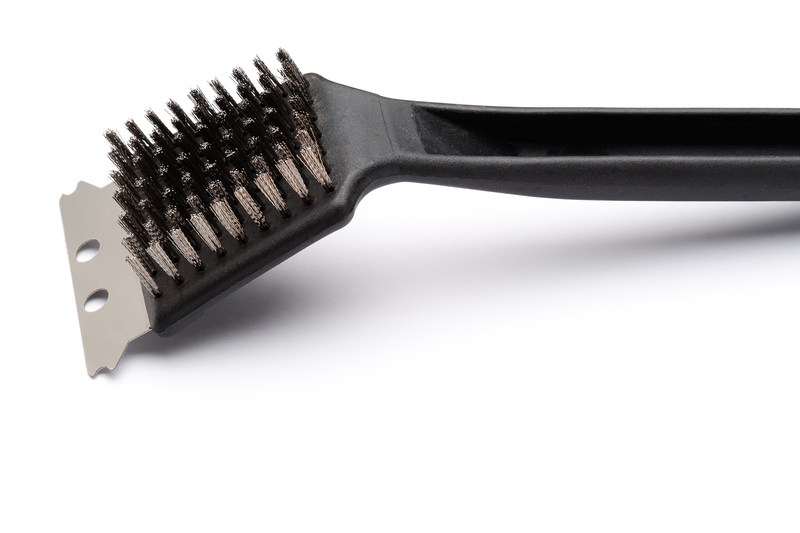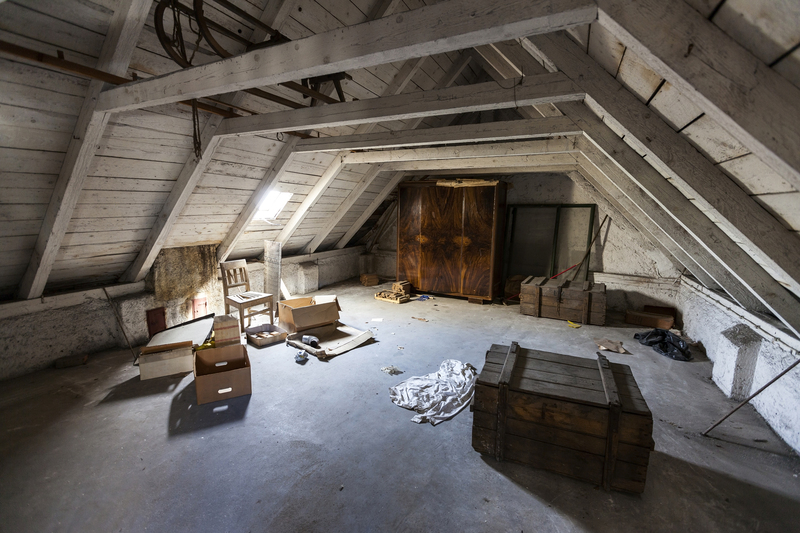Uncover the Best Strategies for Cleaning Burnt-on Stovetop Residue
Posted on 03/09/2025
Uncover the Best Strategies for Cleaning Burnt-on Stovetop Residue
Frustrated by stubborn, burnt-on crud on your stovetop? Wondering how to return your cooktop to a sparkling state without hours of scrubbing? You're not alone. Burnt-on stovetop residue is a common kitchen headache, but with the right approaches and products, you can conquer even the toughest stains.
This article will comprehensively cover the best strategies for cleaning burnt-on stovetop residue using easy-to-follow methods, from commercial cleaners to natural DIY solutions. Whether your range is gas, electric, or glass, you'll find actionable solutions to make your stovetop shine again.
Why Does Burnt Residue Stick to Stovetops?
Understanding the science behind burnt-on residue helps you choose the best cleaning technique. When food and liquids overflow, the heat from your burner rapidly dries and carbonizes the spills. As residues bake onto the surface, they bond tightly. Neglecting these messes only worsens the problem--future heat cycles reinforce that stubborn layer.
Types of Stovetops Affected
- Gas Stovetops: Grates and burner caps trap spills, while enamel, porcelain, or stainless steel surfaces are susceptible to burnt stains.
- Electric Coil Stoves: Drip pans beneath coils often collect and cement burnt-on residue.
- Glass or Ceramic Cooktops: Smooth surfaces highlight every scorch mark and residue layer, requiring extra care to avoid scratches.
Each stovetop type calls for specific cleaning approaches. Let's examine the most reliable strategies.

Essential Supplies for Cleaning Burnt-on Residue
Before starting, assemble your cleaning toolkit. Having the right tools streamlines the process and helps protect your appliance. Recommended supplies include:
- Non-abrasive sponge or cloth
- Soft-bristled scrub brush or old toothbrush
- Plastic scraper or razor blade for glass tops
- Baking soda and white vinegar
- Lemon juice
- Dish soap
- Commercial degreasers or stove-top cleaners
- Paper towels or microfiber cloths
- Heatproof gloves (for tough jobs)
Tip: Always check your appliance's user manual to avoid using substances or tools that could void the warranty or damage the finish.
Step-by-Step Guide: Cleaning Burnt-on Stovetop Residue
For all methods, start with your stovetop switched off and cool to the touch. If necessary, remove grates, burners, or electric coils as instructed by the manufacturer.
1. The Classic Baking Soda and Vinegar Method
This method is suitable for enamel, stainless steel, and glass stovetops.
- Sprinkle baking soda liberally onto burnt-on stains.
- Spray or drizzle white vinegar over the baking soda. This kickstarts a bubbling, loosening reaction.
- Let sit for 15-30 minutes.
- Wipe away the mixture with a damp cloth or non-abrasive sponge.
- Repeat for stubborn spots. Use a plastic scraper gently on glass cooktops for stuck-on bits.
Why it works: The fizzing action breaks down carbonized food and loosens the burnt layer, making residue easier to remove without damaging surfaces.
2. Steam Cleaning for the Win
For extra tough burnt-on stove top residue, steam is a helpful ally.
- Fill a saucepan with water and bring to a boil.
- Place carefully on the affected burner for several minutes.
- Allow the steam to soften gunk.
- Turn off the heat, remove the pot, and let the area cool.
- Wipe up loosened residue with a damp sponge.
This method is particularly efficient for cleaning glass-top and ceramic stoves with baked-on residue.
3. Degreasing with Commercial Stove Cleaners
Commercial products offer targeted action for burnt residues. Popular choices include Bar Keepers Friend, Weiman Cooktop Cleaner, and Easy-Off Oven Cleaner.
- Apply cleaner as directed, focusing on burnt spots.
- Allow time for the product to penetrate and break down residue (check packaging for specifics).
- Wipe clean using a microfiber cloth or damp paper towel.
- Rinse thoroughly to remove any chemical residue before cooking.
Note: Always use gloves and ventilate the kitchen when using chemical cleaners.
4. Using a Razor or Scraper on Glass Cooktops
For glass and ceramic stovetops, a razor blade scraper removes tough, burnt-on deposits.
- Hold the razor scraper at a 45-degree angle and gently push against residue (never use on other stovetop types).
- Spritz with water or cleaner to lubricate and avoid scratches.
- Follow up with a microfiber wipe for streak-free shine.
Warning: Always use a sharp, clean blade and minimal pressure to avoid damaging the cooktop.
5. Lemon and Salt Scrub (Natural Option)
This eco-friendly method not only cleans but also deodorizes your stovetop.
- Cut a lemon in half and dip the cut side in coarse salt.
- Scrub burnt areas with the salted lemon in circular motions.
- Let sit for 10-15 minutes for stubborn patches.
- Wipe clean with a wet cloth, dry, and buff for shine.
Both lemon's citric acid and the abrasive salt help break down caked-on cooking residue naturally.
How to Tackle the Toughest, Most Stubborn Burnt-on Stovetop Residue
If basic cleaning methods aren't delivering, escalate your approach with these advanced tips:
- Soaking Removable Parts: Place burner grates, caps, and drip pans in a sink filled with hot, soapy water. Add a splash of vinegar or baking soda for extra power. Soak for at least 30 minutes, then scrub away loosened residue.
- Paste Solutions: For persistent stains, make a thick paste of baking soda and water. Apply, cover with a damp towel, and let sit overnight before scrubbing.
- Oven Cleaner (for Metal Surfaces): Spray on cooled grates or metal burner caps, allow time, then rinse thoroughly. Do not use oven cleaner on ceramic or glass.
- Precision Tools: An old credit card or silicone spatula can help gently scrape away softened residue without damaging your stove.
Repeat as needed for spotless results.
Preventing Burnt-on Stains: Pro Tips for Maintenance
The best strategy for keeping your stovetop pristine? Prevention is easier than deep cleaning. Consider these experts' tips:
- Wipe spills immediately: Clean up food and liquid spills after the surface cools; fresh stains are far easier to remove than carbonized ones.
- Deep clean weekly: Regular maintenance prevents buildup and keeps burnt-on debris at bay.
- Use burner liners: Special stovetop liners or foil catch most spills, shielding the base from sticky messes.
- Avoid abrasive pads: Never use steel wool or harsh abrasives, which can permanently scratch stovetops--especially glass and ceramic.
- Choose pots wisely: Pans with flat, clean bottoms help prevent drips and spills.
- Rinse cleaning products thoroughly: Residual cleaners left on the surface could get baked on during your next cooking session, worsening stains.
Frequently Asked Questions about Cleaning Burnt-on Stovetop Residue
Can I use bleach on my stovetop?
Bleach is generally not recommended for cleaning stove tops, especially glass or ceramic varieties. It can discolor or damage surfaces. Stick with baking soda, vinegar, or gentle commercial products whenever possible.
What home remedies clean burnt-on stove messes?
- Baking soda and vinegar paste
- Lemon and salt scrub
- Hot towel or steam soak
- Hot soapy water soak for grates
How do you clean burnt-on grease from a glass stove top?
- Allow the surface to cool.
- Apply a thick baking soda paste.
- Lay a hot, wet towel over the residue.
- Let it sit for 15-20 minutes, then gently scrape with a razor blade or plastic scraper.
- Wipe up residue and finish with a glass cooktop polish.
How often should I deep clean my stovetop?
Depending on frequency of use, aim for a deep clean every week to prevent buildup. For daily maintenance, wipe up spills immediately after the surface cools.

Conclusion: Achieving a Spotless, Burnt-free Stovetop
Don't let burnt-on stovetop residue steal the shine from your kitchen. Armed with these proven strategies--from baking soda and vinegar solutions to targeted commercial cleaners and smart preventative habits--you can keep every type of stove clean, hygienic, and gleaming with minimal fuss.
Remember:
- Act promptly when spills occur.
- Use the right tools for your stovetop's material.
- Embrace regular maintenance over arduous scrubbing sessions.
Enjoy mess-free meals and a sparkling kitchen--your stovetop deserves it!
Related Resources
- Good Housekeeping: How to Clean Burnt Stove Tops
- Better Homes & Gardens: How to Clean a Burnt Stovetop
- Family Handyman: Cleaning Glass Stovetops
Have your own tips for cleaning burnt-on stovetop residue? Share your ideas and questions below!




